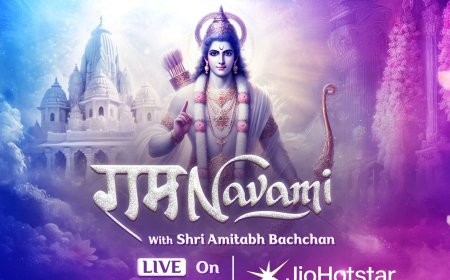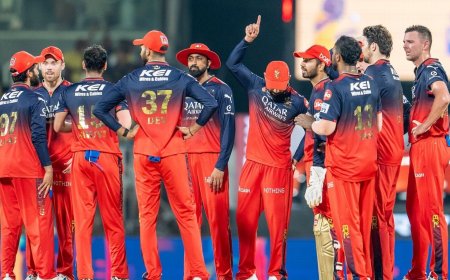Actors ditch urban-centric films for mass-market genres after Covid
Bollywood actors are shifting away from urban-centric films in favor of mass-market genres after Covid-19. Learn why big stars are choosing action-packed and rural dramas over niche storytelling.

A Post-Pandemic Paradigm Shift in Bollywood
The Covid-19 pandemic has brought about sweeping changes in the Indian film industry, not just in the way movies are produced or released, but also in the kind of content actors are willing to bet on. One significant trend that has emerged post-2020 is the conscious pivot of mainstream Bollywood actors from urban-centric, niche cinema to mass-market, pan-India genres.
Top stars like Ayushmann Khurrana, Rajkummar Rao, and even once-experimental names like Vicky Kaushal and Kartik Aaryan are rethinking their project choices. The shift from urbane, multiplex-oriented narratives to action-driven, masala entertainers or rural-rooted dramas is hard to miss.
From OTT Darlings to Single-Screen Charmers
During the pandemic, OTT platforms such as Netflix, Amazon Prime Video, and Disney+ Hotstar offered a haven for urban-centric, experimental content. Films like Gulabo Sitabo, Shubh Mangal Zyada Saavdhan, and Ludo found their audiences online. However, as cinemas reopened and footfalls failed to match pre-Covid levels for non-massy films, stars and producers realigned their strategies.
“The economics no longer favour boutique storytelling unless it’s on OTT. For theatrical success, star-led mass films have proven far more bankable post-Covid,” says Mehul Kothari, Film Trade Analyst and Co-Founder of CineInsights.
Actors who once built their brands around realism and metro-centric stories have either switched lanes or balanced their choices with commercial entertainers. Ayushmann Khurrana, for instance, saw tepid box-office results for Doctor G and Anek, but turned to Dream Girl 2, a formulaic sequel with mass appeal, to stage a comeback.
Why Urban-Centric Films Are No Longer Theatrical Draws
Urban stories generally cater to a limited audience — often educated, English-speaking metro dwellers who have grown more comfortable watching content at home post-pandemic. The rise in OTT viewership, coupled with inflationary pressures and high ticket prices, has reduced the incentive for this audience segment to visit theatres.
“A ₹200+ ticket for a film that could just as easily release online within weeks is no longer attractive to city-goers,” says media consultant Roshni Sen. “Mass-market audiences, however, still seek the theatre experience and prefer spectacle, not subtlety.”
The success of pan-India blockbusters like Pushpa, KGF: Chapter 2, and Jawan has reaffirmed that the biggest returns lie in larger-than-life storytelling that transcends linguistic or regional boundaries. This explains the increasing interest of Hindi film actors in South Indian collaborations, action thrillers, and rural-set narratives.
Strategic Repositioning: A Risk or Necessity?
Kartik Aaryan, known for middle-class urban comedies, turned to patriotic thrillers (Captain India, Chandu Champion) and is also eyeing a big-budget mass entertainer. Vicky Kaushal’s latest line-up includes Sam Bahadur and the mythological epic The Immortal Ashwatthama.
Even Rajkummar Rao, who made a mark with urban dramedies like Bareilly Ki Barfi, recently starred in the commercially viable horror-comedy Stree sequel and the rural-set Srikanth, showcasing this realignment of actor-image.
“Actors are now more cautious. They want scripts that promise wide appeal — Tier 2 and Tier 3 cities are key to box office now,” says Aditya Sharma, Producer at GreenTree Studios.
The Producer and Investor Outlook
Production houses and investors are increasingly backing mass-genre projects with higher scalability. Theatrical ROI remains strong only for content with broad demographic appeal — be it mythological, historical, or action-driven.
Multiplex-focused content, unless it stars top A-listers or comes with a franchise tag, struggles to break even. Moreover, as OTT platforms have also become selective post the content boom of 2020-21, mid-budget films are losing their niche window.
“The current trend is not about dumbing down content but about understanding audience psychology in the post-Covid era,” says Komal Nahta, trade analyst. “Investors are backing stories that unite rather than divide audience preferences.”
Will the Pendulum Swing Back?
While the current trend favours spectacle over subtlety, many believe the shift may not be permanent. If OTT licensing models evolve or if urban audiences begin returning to theatres in larger numbers, there may be room once again for experimental, multiplex-style storytelling.
For now, however, Bollywood actors and filmmakers are playing it safe — chasing box office success with tried-and-tested formulas that resonate across regions.
Post-Covid Bollywood is witnessing a recalibration where mass-market genres are the clear winners. Actors who once thrived on urban realism are now adapting to the pulse of the wider Indian audience. Whether this is a temporary adjustment or a long-term industry reset remains to be seen. What is certain is that versatility, both in acting and storytelling, is more valuable than ever.
What's Your Reaction?
 Like
0
Like
0
 Dislike
0
Dislike
0
 Love
0
Love
0
 Funny
0
Funny
0
 Angry
0
Angry
0
 Sad
0
Sad
0
 Wow
0
Wow
0













































































